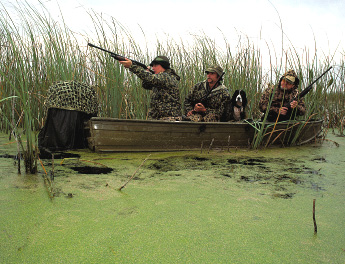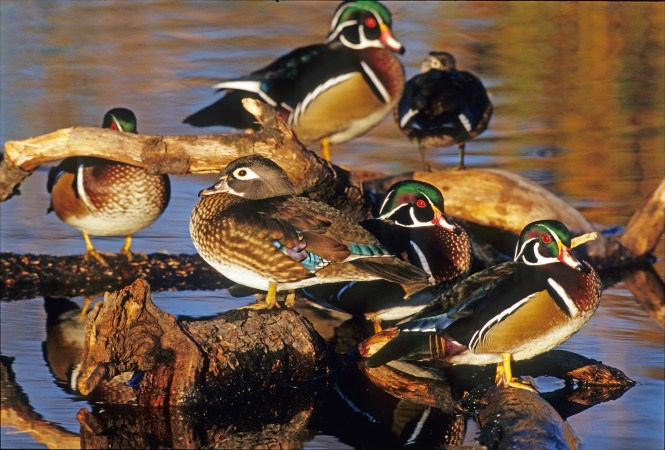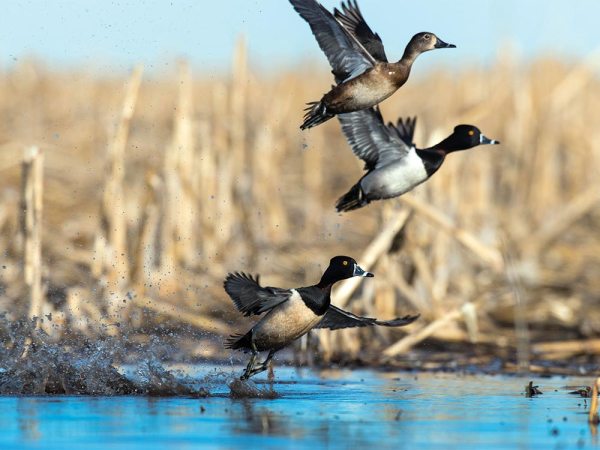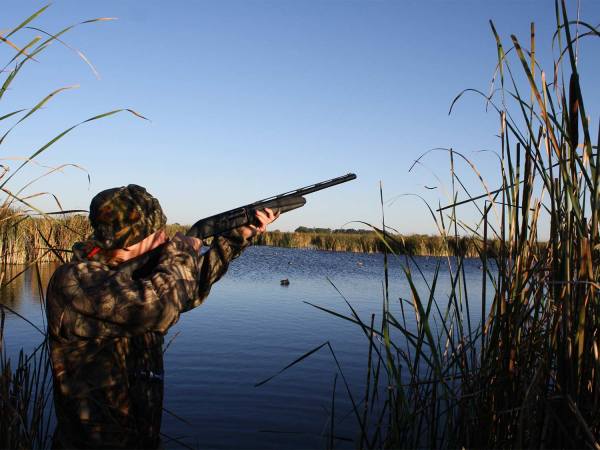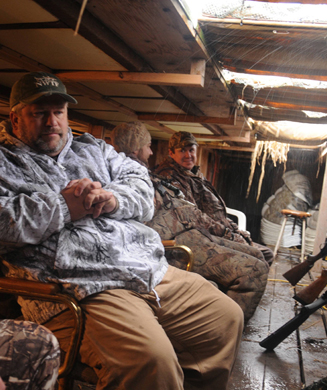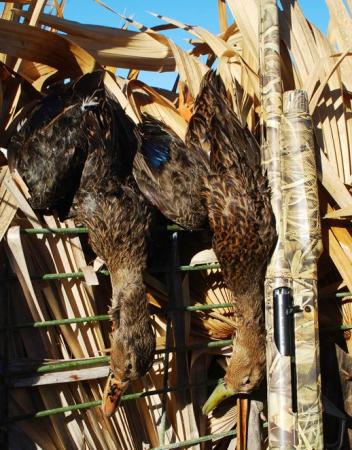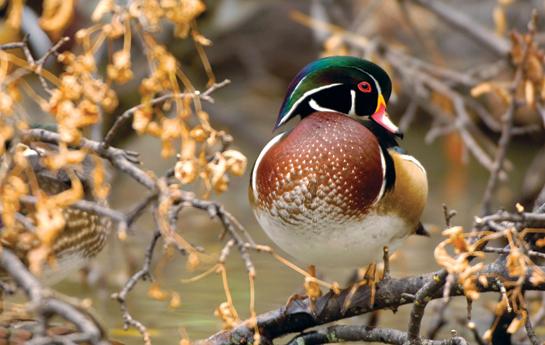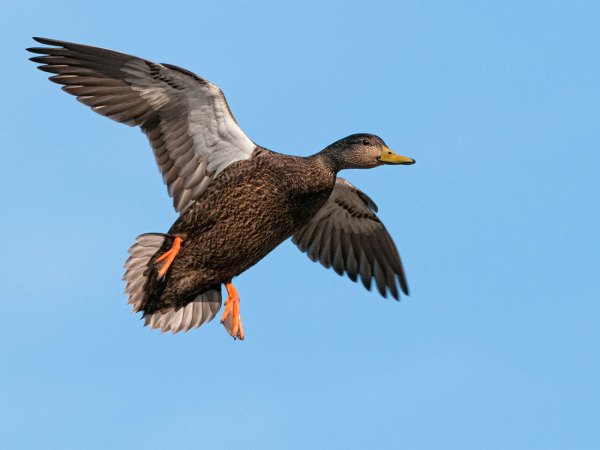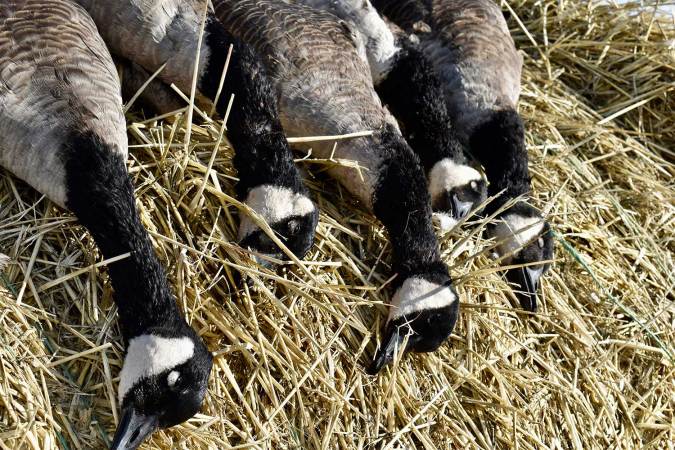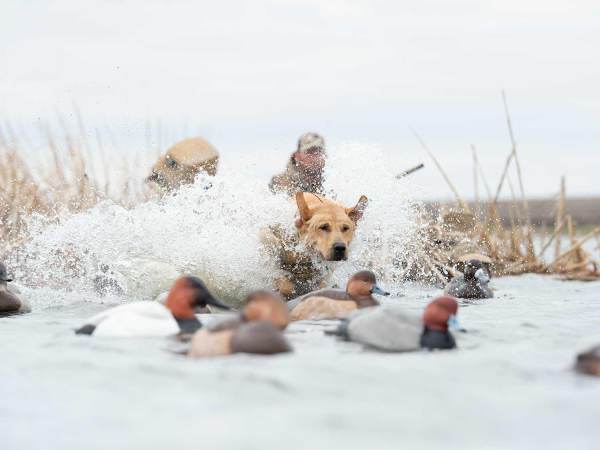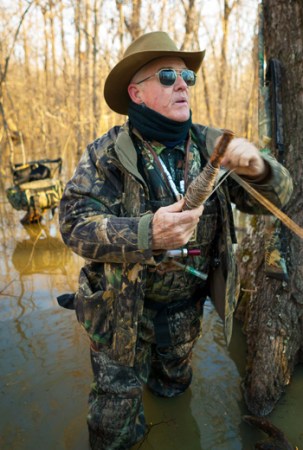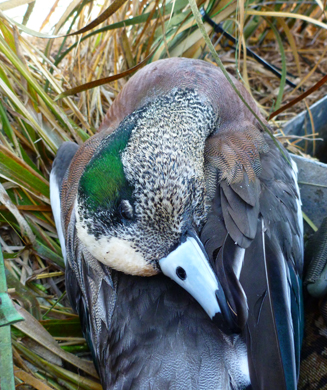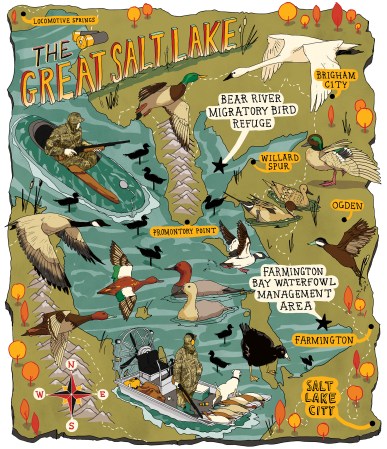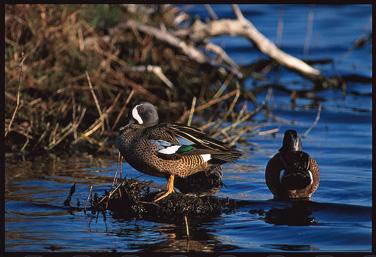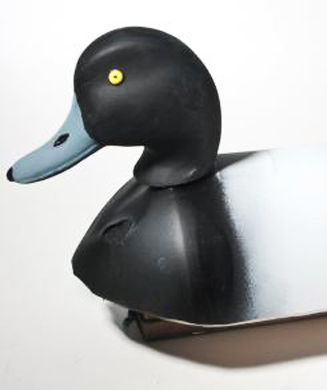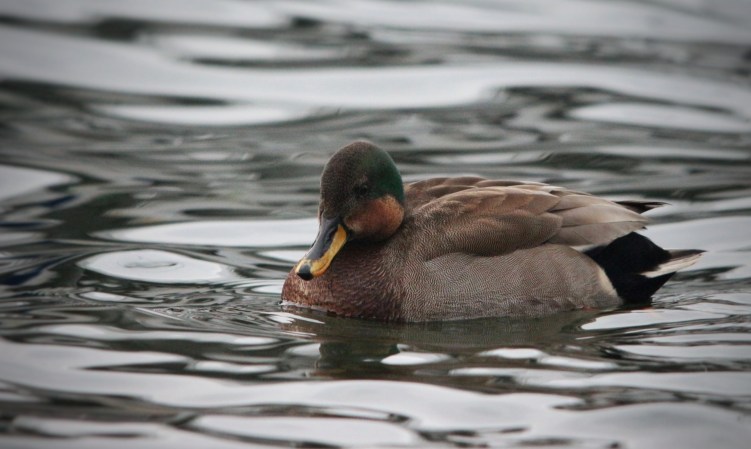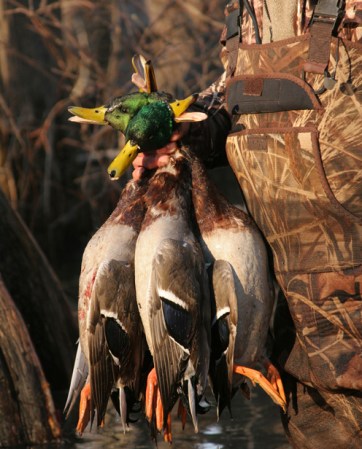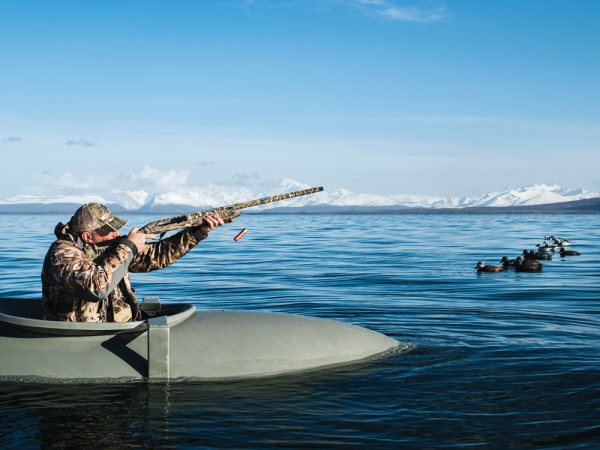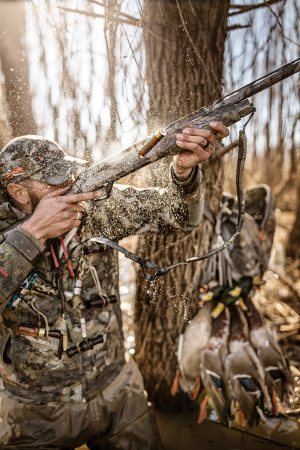Yesterday’s nearly extinct wood duck is among today’s most abundant and best-managed waterfowl species. The small, colorful woody is found in places now where just 50 years ago it was nonexistent. Thanks to years of closed-harvest seasons, wood duck nest-box building projects and better preservation of bottomland hardwoods, wood ducks are thriving from Canada to the Gulf of Mexico and along both the Atlantic and Pacific coasts.
The birds successfully nest almost everywhere there are wooded wetlands. In parts of the South they’re one of only a few native nesting waterfowl species. Many states have large resident populations of wood ducks and receive healthy numbers of migrant birds during hunting seasons. In Minnesota, for example, woodies are the third most common duck harvested, behind mallards and teal. And like teal, wood ducks migrate early in the season, regardless of the weather.
SCOUT EARLY
While wood ducks have webbed feet and bills, they’re very different from mallards, pintails and gadwalls. Woodies don’t quack, they whistle. They nest in trees, not marsh grass, and favor acorns over sedge and grass. They don’t fly, flock, decoy or migrate like other waterfowl, either. For these reasons, sportsmen trying to bag wood ducks are wise to follow specific tactics in locating and hunting these swift-flying “squealers.”
“Pre-hunt scouting is important for consistently getting wood ducks, especially early-migrating birds,” explains Eddie Stevenson, the press relations manager for Remington and a North Carolina hunter. “A float trip on a wooded river is a good way to scout because you can cover so much water.
“It’s easy to combine a float-fishing trip with wood duck scouting. The same rivers that provide quality waterfowl habitat usually hold their fair share of fish. Bass and panfish are abundant on most rivers in the late summer, and wood ducks are commonly seen. I take careful note of where I flush woodies during a float. Sometimes there will be a feeder creek or slough off a main river, and that’s a good place to check for ducks.”
Stevenson will occasionally locate remote beaver ponds during river floats, and these are among his favorite wood-duck hunting locations. A beaver pond on a feeder creek off a river can be a choice wood duck haven. Ducks roost and feed in the pond and fly along a river edge as they trade at dawn and dusk.
“Building a blind in a beaver slough and tossing out a dozen decoys is a good way to get wood ducks in a place you’ve scouted,” he adds. “Sometimes, though, pass-shooting birds as they fly over a pond is the best chance you’ll get. Wood ducks will be very cautious when they have to fly over open water. It doesn’t help that they are one of the fastest-flying duck species. But if you can stand within shotgun range of a riverbank, you could be in a great spot.
“Woodies love to fly along a river timberline, and if you also hunt near a beaver pond tributary, you can get shots at birds using both waterways,” says Stevenson.
Wood ducks are often found in pairs and in small, tight flocks. They fly low and fast, buzzing decoy spreads. Frequently they rocket into range and are gone before the average hunter can react. For this reason, light, fast-handling shotguns with improved-cylinder chokes work best. Stevenson favors 2 3/4-inch loads of No. 6 shot. Others prefer No. 4 shot. While wood ducks have a reputation for not decoying particularly well, veteran waterfowlers say it’s still worthwhile to use life-size wood-duck dekes when targeting the species, but they caution against using more than a dozen.
GET THE SPREAD RIGHT
“Most puddle ducks decoy great to a mallard spread, but woodies seem very species-specific and prefer dropping into a set of wood-duck dekes,” says Bill Cooksey, a lifelong duck hunter from Memphis and director of media relations for Avery Outdoors. “My best results are when I utilize about a dozen wood-duck decoys. Usually I’ll toss them around the edge of a pond in loose groups of two to four. It’s important to make sure there are plenty of landing places for the birds to drop in.
“Sometimes wood ducks work dekes well, making several passes before setting up into the wind and trying to land. This is especially true when they’re flying with other puddle ducks, like mallards. But if wood ducks are flying alone, they’ll usually make just a single pass over a spread and keep going. They’re attracted to decoys, however, and fly over them within shotgun range, so having woody dekes is worthwhile. The challenge is that they’ll be flying very swiftly.”
Motion decoys dupe wood ducks very well, and some hunters, like Tennessee’s Tommy Akin, consistently have success using motorized decoys with spinning wings to attract the birds within range. “Motorized teal decoys are about the same size as wood ducks, and when set in a wood-duck decoy spread they’re great,” he explains. “I do most of my woody hunting on the bottoms of Reelfoot Lake and the Obion River, and we have great results getting birds into our decoy spreads. My best hunting areas are around tall, oversized lily pads, which birds use for shade and cover. Also, they eat moss and insects around those same pads.”
LONG-DISTANCE CALLING
Despite their stealth and speed, wood ducks are very vocal, especially while sitting on the water. Their trademark squeal is easy to reproduce and often the first call young duck hunters can master. The calling serves to create a sense of confidence, rather than attract woodies from a great distance. You’re calling to let the wood ducks know that they’ll be safe if they give your decoy spread a second look.
The “confidence” wood duck call is about as easy as they get. Squeal in sets of two, making a sound like, ooeeeeek, ooeeeek. Some hunters claim that this simple call will even entice ducks already on the water, bringing them within gun range.
LEGAL STATUS
Pass-shooting wood ducks leaving or going to a roosting site can be spectacular and a testament to a shotgunner’s skill. The birds will rip through the sky early and late, creating challenging shooting scenarios. However, care must be taken to hunt only during legal hours. Unfortunately for waterfowlers, the greatest numbers of wood ducks often are in the air when it’s illegal to shoot, especially in the evenings following sunset.
One good tactic for staying legal was taught to me by a Florida game warden many years ago. When he located a productive wood duck roost, he would only shoot it on a drab, overcast day.
Cloudy conditions keep the sky darker during the early hours of the day. This causes woodies to fly later in the morning, during legal shooting time. The same strategy works in the evening, except the birds fly back to roost earlier.
A bit of scouting to determine favorite haunts, followed by careful decoy placement and clever calling, will likely result in a good wood duck hunt. Beyond that, it will still take some nifty shotgunning to end up with a brace of birds. And it certainly doesn’t hurt that wood ducks happen to be among the best eating of all wild fowl.
Condo Hunting
Tired of spending summer building a pit blind or repairing your elevated, above-water blind? Scentite has come up with a portable, maintenance-free solution. The easy-to-assemble Duck Condo is made from a high-density polyethylene shell, with pressure-treated plywood floors and steel-reinforced frames for durability. The blind comfortably holds four people and sports a hinged roof that keeps you hidden from circling ducks (and inclement weather) and raises to let you maneuver and shoot at any angle. The blind is all-weather, too, so it keeps you dry and allows you to hunt comfortably regardless of conditions. The olive-drab exterior contains rubber bungee straps that allow you to further camouflage the blind to match its surroundings. (About $1,200; 800-828-1554; www.scentite.com) –Ruben Perez
Puddlers With a Wood Duck Call
Many waterfowlers view wood ducks as bonus birds, happily taking them if they happen to come to their mallard rig. But for dedicated wood duck aficionados, this kind of thinking brings a smile. For them, pursuing the colorful duck has become a fine art and a passion–but also a calling science.”Wood ducks are real vocal when sitting on the water. Like mallards, they have a lot of different lingo that’s not hard for novice callers to master,” says Steve Reeves of Macon, Ga.Reeves is a top wood-duck hunter. Living in wood duck central, and being a world-class custom call maker, he uses his creations to fool these beautiful ducks.”Here in Georgia, when I hunt puddle ducks, the only call I use is a wood duck call. Woodies are our local ducks, and the migrators know that. When they hear the loud weeeeeet, weeeet call, none of them second-guess it. They don’t circle–they just come with their feet down. Puddlers know the wood ducks are the homeboys.”My favorite hunt is to find the woodies’ flight path and to sit near the water and make ripples on the surface as I give a loud greeter call on my wood duck call. In fact, the wood duck calls are so effective I don’t let anyone in the blind blow a mallard call. The puddlers will come when they hear the squeal,” Reeves says.–R.P.


